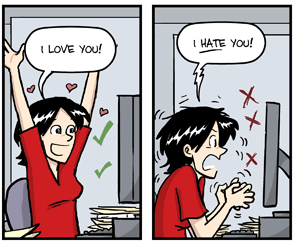Evolutionary Genetics ➜ Bioinformatics¶

- Date: W39-W41
- Lecturer: Jean-Claude Walser
- Update: 09-Oct-2020
Overview¶
I like to help you get started with the very basics in what I call essential bio-computing. There are fundamental and universal techniques you need to understand before you work on genetic and genomic data. You will learn to use the command line and R with special attention to reproducibility.
Requirements¶
Have a look at the requirements. There is still enough time for you to prepare yourself and your computer for this class. It is essential that your computer is ready before we start!
Handouts¶
- TU 22.09.20 - Introduction Part #1
- TH 24.09.20 - Introduction Part #2
- TU 29.09.20 - New Software / RegEx
- TH 01.10.20 - Get Started with R 101 / R 102
- TU 06.10.20 - BLAST
- TH 08.10.20 - NGS
A collection of the recaps which I consider exame-systle questions:
Assignments¶
The assignment are part (1/3) of the final grade. It is important to me that you can apply what you have learned.
Deadline¶
▶︎ Friday, 30. October 2020
Assignment #1: Terminal¶
Try to find solutions for the following list of terminal tasks. Safe the output in a log file. You should be able to use your own local terminal but you are welcome to run it on the GDC server. Do not look too far for solutions. During the local and remote terminal exercises you solved similar problem. You can always find more help using the man or help command. Wrap your journey in a markdown report where you explain what you did or tried. Have a look at the example below for ideas.
- Create a working directory and go there.
- Create a empty log file to collect the output of your solutions.
- Add a header to your file.
- Add your user name and data to the file.
- What weekday was 1. August 1291?
- Download the multiple nucleotide sequence file BlastHits.fasta from http://www.gdc-docs.ethz.ch/UniBS/HS2020/BioInf/data.
- How many sequence records are in the downloaded fasta file?
- Extract the last nucleotide sequence (i.e. header and sequence) from the file.
- Test if the oligo probe 5'-AAGNNGACAGTCG-3' would bind to any of the sequences.
What I want from you: I need a markdown report file (.md) explaining what you did. Here is a md and an html example/template. I would also like the resulting log file (.txt). You may add any other file you like (e.g. html, files) but combine everything in one folder, zip it and send it to me via e-mail. All files have to start with the assignment number followed by the name of the author (e.g. A1_Nik_Tesla.zip)
Content of folder:
- A1_Nik_Tesla_Logfile.txt (mandatory)
- A1_Nik_Tesla_Report.md (mandatory)
- A1_Nik_Tesla_Report.html
- A1_Nik_Tesla_Figure1.jpg
- A1_Nik_Tesla_Figure2.jpg
Assignment #2: Regular Expressions¶
RegEx is a powerful extension of the find and replace option many programs provide. For the assignment try to find a reformat problem of your own. You have seen many examples in case you need some inspiration. Write a markdown report explaining the problem/task and the implemented solution. Here is a example of a minimalistic solution in md and html format.
Assignment #3: R Function¶
Write your own personal R function. You have seen many example to wrap R code into a function. With a few adjustments and some helpful comments you can convert R code into an R function. Once you have sourced the function (source /path/MyFunctions.R) you can apply it to similar problems. Here an example of a collection of different functions from previous classes. Last year ,I got a wonderful refeshing function from Elena Finker. I hope these examples spark ideas!
Now, it is your turn. Either you recycle and extend one of the examples or you create something new.